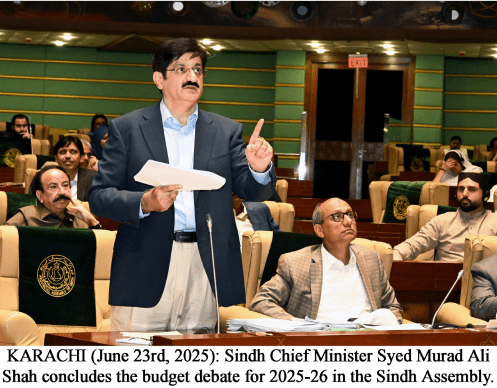Integrated economic planning for Pakistan’s power sector requires a comprehensive approach that addresses the multifaceted challenges faced by the sector today.
At its core, this planning should aim to synchronise policies, investments, and operational decisions across all segments of the power sector – generation, transmission, and distribution – while aligning them with the broader objectives of economic growth, industrial competitiveness, and environmental sustainability.
Holistic policy frameworks are essential for a unified direction for the power sector. For instance, the US’s Integrated Energy Policy mandates federal and state-level alignment of energy policies with economic goals, ensuring coordinated planning across sectors. In Pakistan’s context, this could involve establishing a National Energy and Economic Sustainability Committee to align power sector policies with broader industrial and agricultural objectives. The committee could coordinate efforts to ensure electricity is affordable for key sectors, such as textiles, while also considering the sustainability component of power sector in lieu with upcoming Carbon Border Adjustment Mechanism (CBAM) which will impose emission fee on carbon intensive exports to European Union. This will require decarbonization of national grid in order to bring textile industry to the grid.
The decarbonisation of the grid will need renewable energy alternatives, for which the use of data-driven decision-making is critical. Germany’s Energiewende Program uses real-time data from smart grids and forecasting tools to plan energy transitions effectively. On demand side management, Pakistan can adopt a similar approach by investing in Advanced Metering Infrastructure (AMI) and leveraging demand-side analytics to identify inefficiencies and prioritise investments. Implementation could begin in urban centers like Karachi and Lahore, where high electricity theft and losses necessitate precision targeting.
Optimising the energy mix is a key component of integrated planning. India’s National Solar Mission emphasises solar energy as a core part of its energy mix to reduce reliance on fossil fuels. Pakistan could replicate this by expanding its Alternative and Renewable Energy Policy (ARE 2019) to include mandatory renewable energy quotas for distribution companies (DISCOs) on account to Competitive Trading Biliteral Contract Market (CTBCM). For example, setting a 30 per cent renewable energy target by 2030 could significantly reduce dependency on imported fuels, supported by incentives for solar and wind projects in Sindh and Balochistan.
Decentralisation and the promotion of distributed energy resources such as rooftop solar and microgrids can alleviate pressure on the national grid. Bangladesh’s Solar Home System Program, which installed over six million solar systems in off-grid areas, is a notable success. Pakistan could replicate this by offering subsidised loans for rooftop solar installations in urban areas and promoting microgrids in remote villages. Implementation through community-based energy cooperatives in regions like Gilgit-Baltistan could ensure equitable access and local involvement. This will potentially transform the subsidy regime in the power sector. Currently, the government gives around Rs90 billion in subsidy to protected consumers who make up 53 per cent of the total electricity consumers. The solar home systems for these consumers can reduce the cross subsidisation in the power sector. The actual protected consumer can be given a subsidy through the Benazir Income Support Program (BISP).
Integrated Resource Planning (IRP) ensures that electricity supply planning is closely aligned with national development priorities. South Africa’s Integrated Resource Plan links energy planning to economic growth and climate goals, facilitating balanced capacity expansion. Pakistan could adopt a Pakistan Integrated Energy Resource Framework, aligning power generation capacity with future demand forecasts and economic growth targets. This framework could also involve integrating renewable energy in Sindh. However, Pakistan currently faces a capacity trap, where some existing capacity could be retired early through initiatives such as Just Energy Transition Partnerships (JETPs), the Energy Transition Mechanism (ETMs), and Coal to Clean Credit Initiatives (CCCIs).
Introducing a capacity auction market could help replace Pakistan’s unsustainable long-term power purchase agreements. Brazil’s Capacity Auction System ensures competitive bidding for new capacity, resulting in cost-effective procurement. Pakistan could establish a Competitive Capacity Auction Market, requiring Independent Power Producers (IPPs) to compete for contracts. This system could be piloted for new renewable energy projects, reducing fiscal pressure and enabling a transition away from costly fixed-capacity payments.
Investments in transmission and distribution infrastructure must be prioritized to address the sector’s inefficiencies. China’s State Grid Corporation Modernisation Program significantly reduced transmission losses through investments in high-voltage direct current (HVDC) lines. Pakistan can implement a Transmission Modernisation Plan focusing on HVDC lines to connect renewable-rich areas like Sindh and Balochistan with major demand centers. The government could engage in public-private partnerships (PPPs) for funding and execution. But major planning is required to link this line to a productive economy.
Industrial tariff reforms are essential for aligning electricity consumption with economic growth. Vietnam’s Special Tariff for Export Industries provides discounted electricity rates for industries contributing to export earnings. Pakistan can adopt a Competitive Industrial Tariff Framework, targeting export-oriented sectors like textiles and surgical instruments. Implementation could involve offering time-of-use discounts and long-term tariff guarantees for industries that demonstrate increased electricity consumption and exports.
To ensure financial sustainability, it is critical to address the circular debt crisis by reforming subsidy structures and improving bill collection mechanisms. Pakistan could implement a Circular Debt Resolution Program, linking subsidies to targeted cash transfers for low-income households through the Benazir Income Support Program (BISP). This could improve fiscal discipline while protecting vulnerable consumers.
Renewable energy integration should be accelerated through simplified regulations and fiscal incentives. Pakistan can adopt a Fast-Track Renewable Integration Program, simplifying approvals for renewable projects and providing tax incentives. This programme could prioritise utility-scale solar and wind projects in areas with high potential, such as Thatta and Gharo.
Cross-sectoral synergies must be explored to maximize the economic benefits of an integrated power sector. Kenya’s Electrification of Agriculture Program linked renewable energy projects to agricultural productivity, reducing diesel dependence. Pakistan could develop an Agricultural Electrification Initiative, electrifying tube wells in Punjab through solar energy, reducing diesel imports and improving agricultural yields.
Sector coupling, which refers to integrating different sectors like power, transportation, heating, and industry, can unlock new synergies for the power sector while contributing to economic growth and decarbonisation. A prime example is Germany’s Power-to-Gas (PtG) Initiatives, which utilise surplus renewable electricity to produce green hydrogen for industrial use and export. Pakistan could implement a Renewable Energy Sector Coupling Framework to create similar opportunities, particularly in areas like Thatta and Gharo, where wind energy is often curtailed due to grid constraints. Surplus wind energy could be converted into green hydrogen through electrolysis and used to decarbonise industries such as fertilizer production or steel manufacturing. The green hydrogen could be exported. This approach would not only optimise renewable energy utilisation but also create jobs in emerging green technologies, aligning with Pakistan’s goals for economic diversification.
Net metering for solar-powered handicrafts and entrepreneurship offers a promising avenue for empowering communities and supporting small businesses. For instance, India’s PM-KUSUM Scheme enables rural entrepreneurs to install solar systems, generating income by selling surplus electricity back to the grid. Pakistan could adopt a Solar Handicraft and Entrepreneurship Support Program, promoting net metering for small-scale solar setups in regions known for handicrafts, such as Sindh and Khyber Pakhtunkhwa.
Artisans and entrepreneurs could use solar energy to power their looms, pottery wheels, and small machinery, significantly reducing operational costs. Surplus electricity could be sold back to DISCOs, creating an additional revenue stream. To support implementation, the government could provide subsidised loans for solar installations and train local communities in system maintenance. By combining solar energy with net metering, this initiative would foster economic independence, promote renewable energy, and reduce poverty in rural areas.
Regulatory reforms should focus on streamlining processes to attract private sector investment. Chile’s Renewable Energy Auctions simplified bidding processes, leading to significant cost reductions. Pakistan can implement a Streamlined Renewable Auction Framework, reducing bureaucratic hurdles for project approvals and ensuring transparent bidding. This framework could attract investment in renewables, particularly from foreign investors.
Monitoring and evaluation mechanisms are necessary to ensure the effectiveness of integrated planning. Canada’s Energy Transition Monitoring Initiative tracks the implementation of energy policies and adjusts strategies as needed. Pakistan could establish an Energy Planning and Monitoring Unit, using key performance indicators (KPIs) to assess progress in reducing T&D losses, increasing renewable integration, and meeting demand targets. Regular reporting could ensure accountability and adaptive management.
Integrated economic planning for Pakistan’s power sector offers a pathway to overcoming the challenges of inefficiency, high costs, and fiscal imbalances. By aligning energy policies with national development goals, leveraging data-driven insights, and fostering cross-sectoral synergies, Pakistan can transform its power sector into a catalyst for sustainable economic growth. Such planning requires political will, stakeholder collaboration, and a relentless focus on efficiency and equity. It is an opportunity that Pakistan cannot afford to miss.






